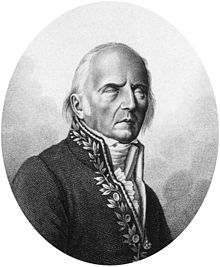
| Home | Sources Directory | News Releases | Calendar | Articles | | Contact | |
Inheritance of acquired characteristics
|
|
This article does not cite any references or sources. Please help improve this article by adding citations to reliable sources. Unsourced material may be challenged and removed. (April 2009) |
The inheritance of acquired characteristics is a hypothesis about a mechanism of heredity by which changes in physiology acquired over the life of an organism (such as the enlargement of a muscle through repeated use) may purportedly be transmitted to offspring. It is also commonly referred to as the theory of adaptation equated with the evolutionary theory of French naturalist Jean-Baptiste Lamarck known as Lamarckism. The idea was proposed in ancient times by Hippocrates and Aristotle, and was commonly accepted near to Lamarck's time. Comte de Buffon, before Lamarck, proposed ideas about evolution involving the concept, and even Charles Darwin, after Lamarck, developed his own theory of inheritance of acquired characters, pangenesis. The basic concept of inheritance of acquired characters was finally widely rejected in the early 20th century.
Long after triumph of the central dogma of molecular biology, which is often equated with the idea that the DNA of a cell alone determines its fate, the theory of adaptation continued to attract attention. One of the core ideas that has been used to support the theory of adaptation is the observation that the germ plasm of an egg cell is in part derived from the diploid cells of the parent;[citation needed] this cytoplasm is hypothesized to influence the early stages of a developing embryo. Since the germ plasm of the egg has a different genotype than that of the egg nucleus itself, supporters of the theory of adaptation looked for examples in which the offspring shared a trait of the parent.[clarification needed] Some researchers[which?] claimed that in quantitative genetics models that included a maternal effect made more accurate predictions. However, these models have been disproven[citation needed].
In the 1920s, Harvard University researcher William McDougall studied the abilities of rats to correctly solve mazes. His reports claimed that offspring of rats that had learned the maze were able to run it faster. In his data, the first rats would get it wrong 165 times before being able to run it perfectly each time, but after a few generations, it was down to 20. McDougall attributed this to some sort of Lamarckian evolutionary process. However McDougall's experiments could never be repeated by other experimenters, and have been criticised for having several methodological problems and poor record-keeping.[1][2]
During the rule of Joseph Stalin in the USSR in the 1930s, the theory of inheritance of acquired characteristics was central to the dogma put forth by Trofim Lysenko, president of the Soviet Academy of Agricultural Sciences. Lysenkoism was advanced primarily in service to Soviet agriculture, always resulting in dismal failure. But its implications for human biology were not lost on the Soviet leadership.
[edit] See also
- Adaptation
- Epigenetics
- Germ plasm theory
- Lamarckism
- Lysenkoism
- Nature versus nurture
- Pangenesis
- August Weismann
[edit] References
- ^ WE Agar, FH Drummond, OW Tiegs, MM Fourth (final) report on a test of McDougall's Lamarckian experiment on the training of rats Journal of Experimental Biology, 1954
- ^ FAE Crew A repetition of McDougall's lamarckian experiment Journal of genetics, 1936
|
SOURCES.COM is an online portal and directory for journalists, news media, researchers and anyone seeking experts, spokespersons, and reliable information resources. Use SOURCES.COM to find experts, media contacts, news releases, background information, scientists, officials, speakers, newsmakers, spokespeople, talk show guests, story ideas, research studies, databases, universities, associations and NGOs, businesses, government spokespeople. Indexing and search applications by Ulli Diemer and Chris DeFreitas.
For information about being included in SOURCES as a expert or spokesperson see the FAQ . For partnerships, content and applications, and domain name opportunities contact us.
